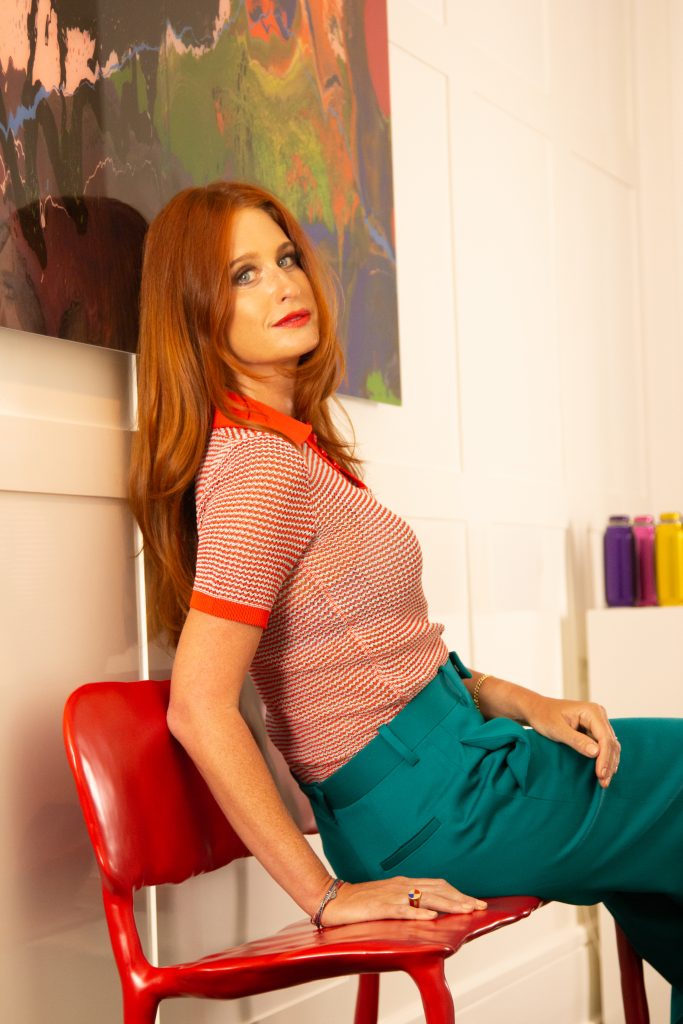ZsONAMACO 2018: The Universal Language of Angles
Exploring geometric abstraction at the Mexico City art fair

Just over a century old, geometric abstraction has remained an enduring and continuously evolving movement in the Western art world. Leading to a number of monumental sub-movements (such as De Stijl, Cubism, Bauhaus), the use of the simplified Euclidean shape has allowed for endless possibility in composition while conveying a universal understanding of form. This has granted the style flexibility enough to be translated out of the museum and into everything from fashion design, to architecture, to interior decor. Needless to say, geometric abstraction in all of its interpretations saturated ZsONAMACO, which after all is by definition a contemporary art fair. Paring down to a few favorites is accordingly difficult; nonetheless, here are a few exceptional works that had us circling back again and again.

Daniel Buren
Given Daniel Buren’s historically anti-establishment philosophy and dedication to creating work for the public, it’s always a little ironic to find his work out of its original context. Still, Buren’s two pieces at the fair, “Untitled” (2018) presented by Galeria Hilario Galguera, and “Pile Up: High relief n° B5” (2017) presented by Lisson Gallery, served the artist’s usual presentation by delighting the crowd with their floating, brightly-colored prisms and reflective surfaces that begged for interaction. Lisson Gallery pays homage to their decades-long relationship with Buren here, who in fact created this piece for an exhibition at the gallery, which he has used as his studio for 40 years.
Carlos García Noriega Bueno
Sculptor and architect Carlos Garcia Noriega Bueno combines art with ecological activism for “Lagrimas del Sol” (tears of the sun), a series of metal sculptures built in partnership with honeybee rescue organization Efecto Colmena. The series addresses colony collapse disorder, an ecological disaster with no definitive cause that has devastated honey bee hive populations for the past 12 years. Using only hexagonal shapes to represent the six-sided honeycomb, Garcia Noriega Bueno’s origami-like forms are placed in colony conservation shelters, offering bees a place to build their hives. Wax made by that same colony is then used to coat parts of the sculpture, documenting the conversation between builders of both the natural and human worlds.

Gabriel Orozco
Similar to Buren, Gabriel Orozco has dedicated his ouvre to the location he is situated in. Inspired by a lifetime of nomadism, Orozco uses his artwork as a conversation with the local ethos, adapting process, materials, and products. Brought to the festival by his representation at Marian Goodman Gallery, “Light Signs #6 (Korea)” gives us a glimpse of the artist at work in Korea for the 1995 Gwangju Biennale. The sixth in a series of ten, Orozco reflects the light box advertisements popular in Gwangju, and enlisted the help of a local sign-maker to complete the exhibition in just the week leading up to the Biennale. This is one of the first manifestations of Orozco’s “thinking in circles” motif, for which the artist has become famous.

Eamon Ore-Giron
Though the category of geometric abstraction lands plainly in the ethos of European modernism, Eamon Ore-Giron’s use of the vernacular is anything but. His work is undeniably contemporary yet haunted by indigenous symbolism and spirituality, presenting tapestries woven by the futurist hand of an ancient medicine man. These portraits of Quetzalcoatl and Coatlicue, the respective masculine and feminine deities of the Aztec creation stories, are a marriage of the “Old” and the “New” that is impossible in a globalist culture machine that views progress as erasure of the past for supposedly greener pastures ahead. At the same time, the pieces reflect the continuum of birth and destruction represented by the subjects themselves, and beg a wider scope from which to view the rise and fall of empires, belief systems, and even art movements.

Alex McLeod
We ignore the fact that the day-to-day is a mathematical experience, with subjective perception and emotion clouding the quantifiable equations that make life possible at all. The Toronto-based Alex McLeod seems to address this with his stunning new media “Cycles” series, in which he uses 3D modeling and graphics to bring geometric organisms to life. His simulations appear to expand and collapse with breath, maintaining ultra-realistic textures while defying the laws of physics. It’s geometric abstraction in its obvious present-day technological iteration, displaying just how transcendent the genre remains and how far it has yet to evolve.
Images by Cool Hunting












